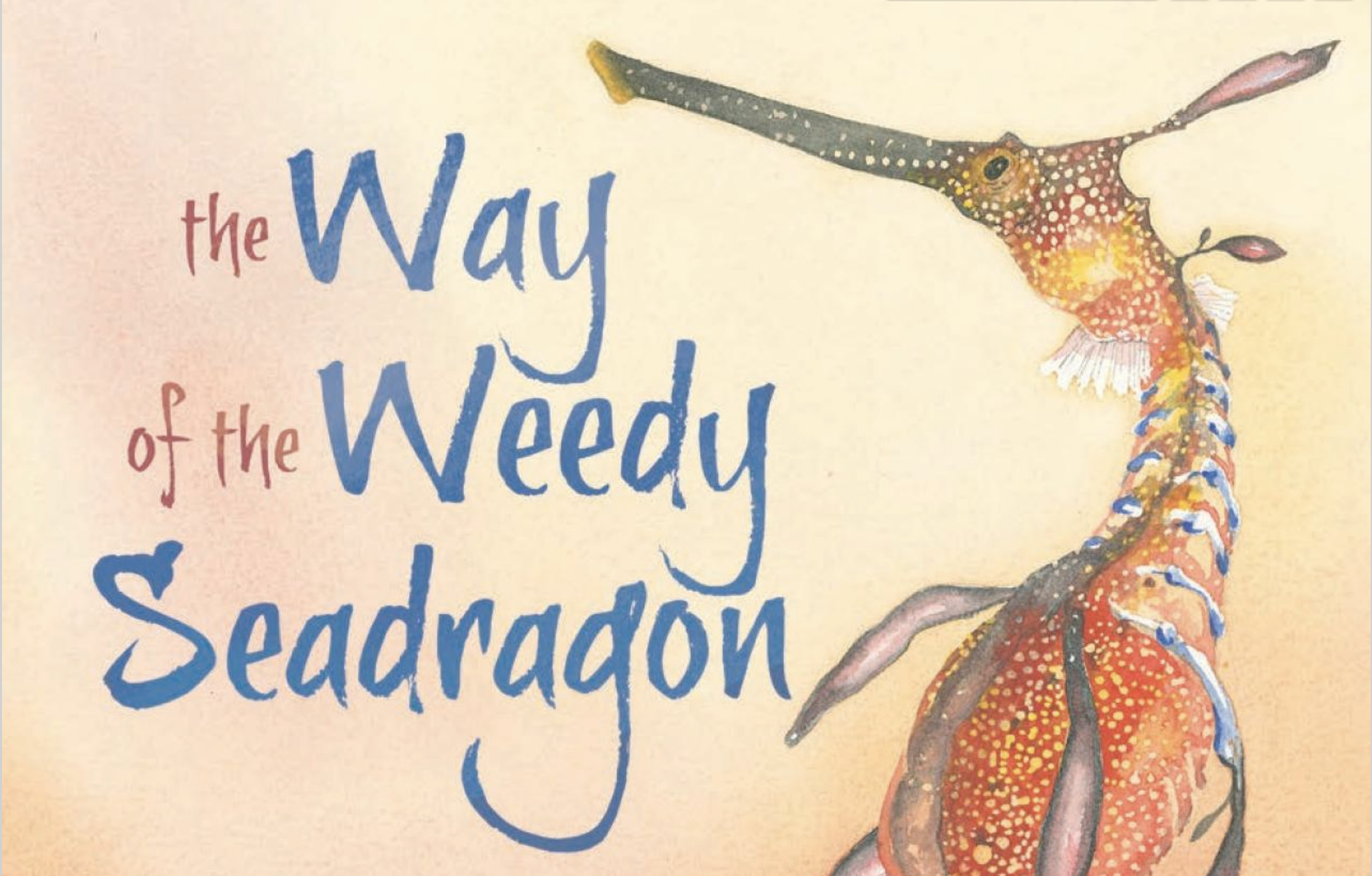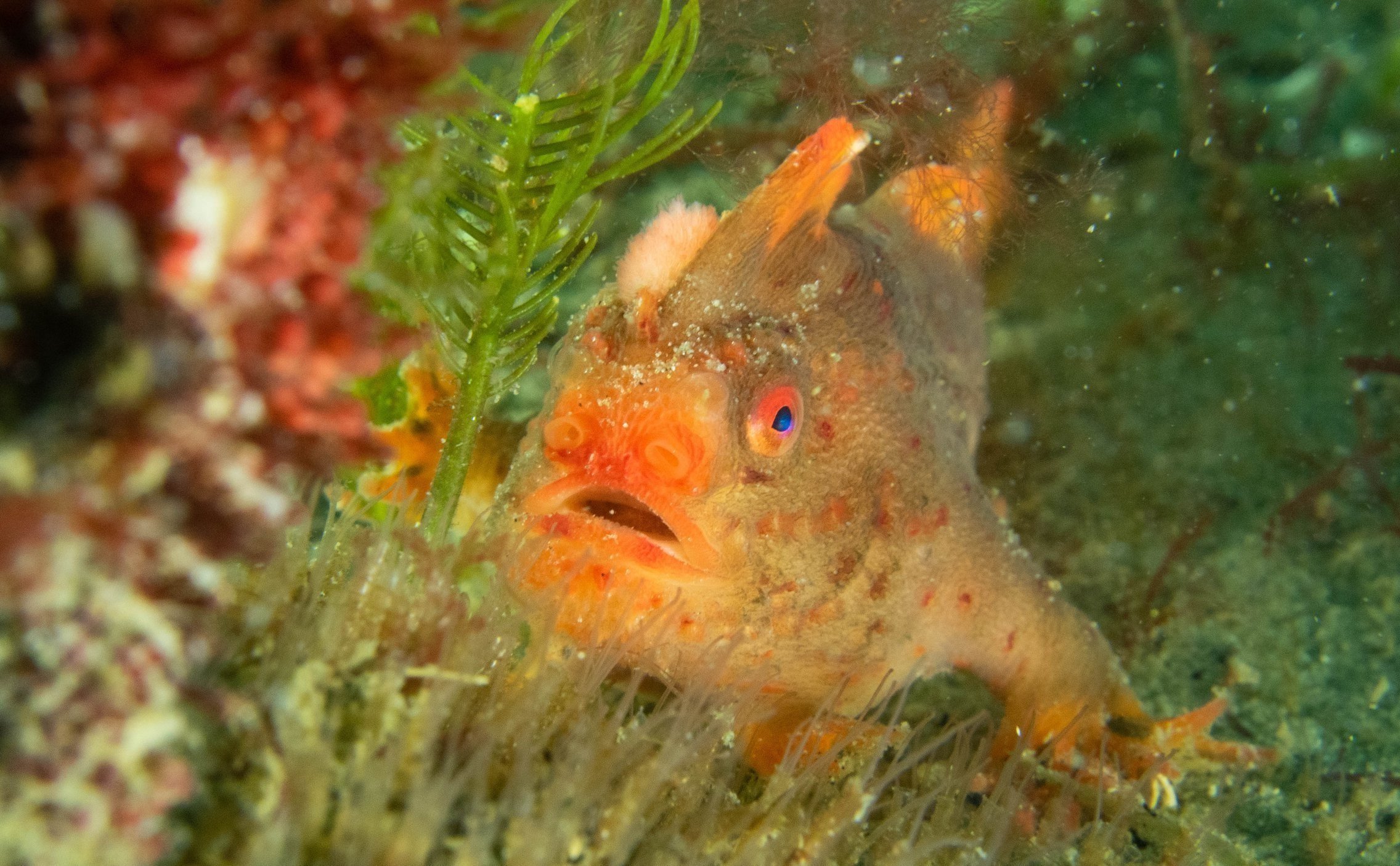Kelp Forest Themed Picture Books
This page is a collection of picture books, endorsed by the GSRF, relevant for teaching and learning about the Great Southern Reef in schools across Australia.
The Great Southern Reef picture book inspires kids to explore the nature at their local beaches in a safe and responsible way. It connects young readers to familiar marine environments, introducing the concept of the GSR through Frankie, Sam and Professor Seaweed.
The inception of the Great Southern Reef picture book project was driven by a comprehensive evaluation of existing children’s books on marine science, revealing a conspicuous absence of narratives about kelp forests.
The introduction of Professor Seaweed, a character that embodies the expertise and leadership of female marine scientists, further enriches the story, serving as a testament to the impactful work of women in the field of marine science and an inspiration for young readers.
Through vivid storytelling and compelling illustrations by Cate James, the Great Southern Reef picture book invites children to embark on a journey of exploration and discovery, fostering a deeper connection with their local temperate reefs and an appreciation for the lesser-known kelp forest ecosystems that play a critical role in our planet’s marine biodiversity.
Aimed at year 1-4 students, CSIRO Publishing have created these Teacher Notes to support classroom use of the Great Southern Reef picture book by Prue Francis and Paul Venzo.
One of the GSR’s most iconic creatures is of course the Weedy Seadragon. If you have ever seen one in the wild, you will know that these whimsical creatures will take your breath away.
“The Way of the Weedy Seadragon” showcases this fascinating species with charming behaviours and interesting physical features such as leaf-like appendages that assist with camouflage.
The book also includes a glossary and a section explaining more about the weedy seadragon and the environmental threats it faces.
Author Anne Morgan has training as a Biology Teacher and holds a PhD in writing. The book is recommended for readers ages 6-9 and the teacher notes are available here. The teacher notes explore pre-reading activities, discussion questions and science, art and English related activities.
Hold On!
The Spotted Handfish has survived since the time of the dinosaurs — until now. Invasive sea stars, pollution and climate change mean that this unique Australian is in real trouble. This primitive little walking fish is the perfect mascot for the smaller critters in across the Great Southern Reef that need our conservation help.
Demonstrating the impact of Citizen Science programs this book encourages young readers to consider the impact of human behaviour on one particular species, and, to sea creatures generally.
Award winning author and science communicator Gina M. Newton shared part of the motivation bending writing the book “ I nudge ever closer to achieving a personal goal of more than twenty years – to make the Spotted Handfish a household name around Australia...“Hold On! Saving the Spotted Handfish is an amazing example of how science can help with a conservation problem. “
Illustrator Rachel Tribout captures the essence of this unique creature, reminding us of the creativity and dedication required to save it from the brink.
“This strange little creature was so close to extinction that scientists had to work very hard and get pretty creative to keep it alive. I loved being involved in a project that aims to educate kids on the lesser known creatures that inhabit our world, and to illustrate how we can help undo the damage that humans inflict on our environment.
Teacher notes provided here.
Written by marine scientist Rebecca Morris, “The Underwater Forest” is an educational picture book based on real-life research.
The story follows Oliver, who is met with a stark reality when he finds the once lush kelp forests in Port Phillip Bay have been devastated by sea urchins. As the weather starts to change, the underwater forest can’t get the nutrients it needs to grow. Lots of sea urchins move out of their crevices and start to eat the underwater forest.
The only way to help the underwater forest is to reduce the number of urchins, but there are too many for marine scientists to collect.
When people start fishing the urchins to sell for food, the number of urchins is quickly reduced. Oliver is surprised that people can eat the spiny urchins! With fewer urchins, Oliver’s mother can then restore the underwater forest
This narrative explores themes of environmental impact and the resilience of nature, making it a powerful educational tool for young readers to understand the importance of the Great Southern Reef, vulnerability of kelp forests and restoration techniques.
While the book is recommended for readers ages 4-8, it can be used as a powerful education tool for older students too. Illustrations by Matt Howorth
With a Little Kelp from Our Friends
With a Little Kelp from Our Friends is a fantastic, easy-to-understand book for kids to learn about just how important seaweed is.
Mathew Bate reveals how it is used in food, health, and medicine. Some of the book’s important themes also include seaweed farming, the history of seaweed use around the world and seaweed’s role in solutions for a changing climate.
Illustrator Liz Rowland used a combination of oil paints, oil pastels and relief printing for the illustrations as they are particularly well suited to re -creating the different textures of sea creatures and seaweed.
At the end of the book there are suggested activities, a glossary and a note from the author suggesting ways in which the reader can help protect the environment. Recommended for years 7 and up, this picture book will educate and inspire, and encourage respect for the natural world.
Author: Matthew Bate
In this delightful children's picture book, Aunty Patsy Cameron generously shares the stories and traditions from her family's seasonal island life in Tasmania. With evocative text and stunning illustrations, Sea Country lets the reader know when to pick ripe wild cherries, when the moon (mutton) birds fly home and how the nautilus shells smell like the deepest oceans. Teacher notes provided here.
"Giinagay Gaagal, Hello Ocean" is an enchanting children's book that serves as a heartfelt tribute to the joyous days spent by the ocean. Created by the talented Gumbaynggirr artist Melissa Greenwood, this work celebrates the ocean (Gaagal) as a special place where families can swim in the waves, catch fish (yamaarr), and enjoy eating, dancing, and playing games together. It's a vibrant portrayal of the ocean's beauty and a call to cherish and protect these precious marine environments.
At first glance there's nothing much to see. But the rock pools are full of secrets. Nestling between rocks ... Hiding in the seaweed ... What creatures will you find? Discover their secrets in this flap book. Children will be fascinated with the depictions of sea cucumbers, crabs and sea anemones. The addition of a pictorial glossary is also very useful for those students who want to learn more about sea creatures and their environment.
This guide by Catia Freitas is targeted for primary teachers, offering engaging inquiry-based educational activities linked to ocean-themed picture books, background information for educators and useful links to create an interactive and enjoyable unit focussed on
For teachers exploring the Great Southern Reef through picture books, the article "The Role of Children's Literature in Marine Education" offers insightful perspectives on integrating marine themes into educational settings. It underscores the importance of using literature to cultivate environmental stewardship and ocean literacy among young learners.
Check out the Great Southern Reef Foundation Educator Hub to dive in to a collection of kelp forest resources, tailed for all year levels.












